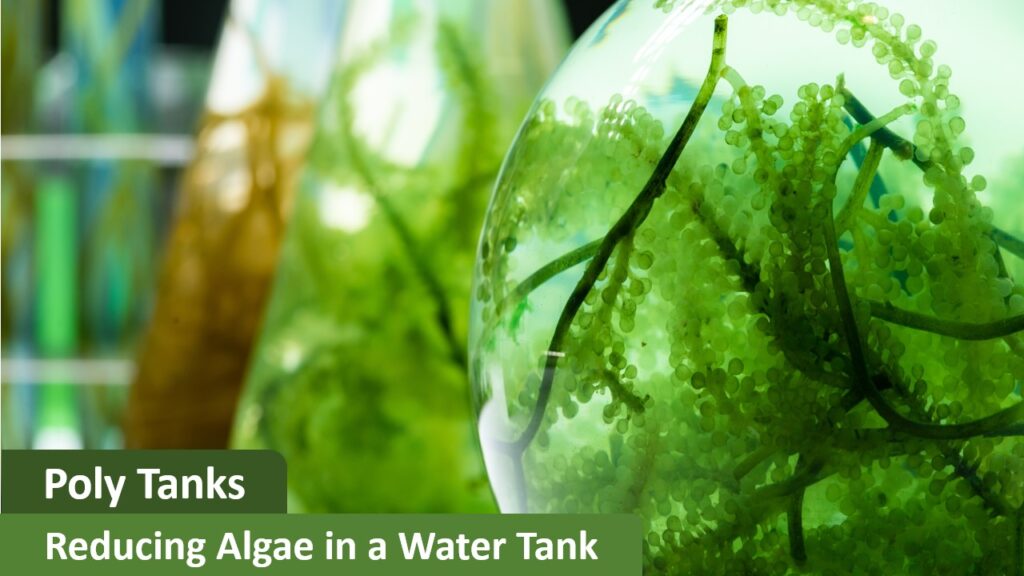
Many water tank owners, and rainwater tank owners, are all-too familiar with the problem of green algae growing in their stored water resource. Perhaps it goes without saying, but algal growth is undesirable. Algae is not only undesirable but also problematic as it reduces usable water quality, can clog equipment such as pumps and filters, and generally makes the water unpleasant to work with.
The growth of algae can happen in many cases whenever water is being stored. Applications such as agriculture or livestock, in aquaculture or aquaponics, uses around your personal house or property, in rainwater harvesting, commercial processes, or in long term storage as an emergency supply, algal growth can occur.
Algae can rapidly bloom in stockpiled water and sunlight is the key to whether it will happen or not. And for most, algal blooms are the opposite of a welcome event, and most would rather reduce or eliminate altogether this occurrence that will repeat if preventative measures aren’t taken.
An Unwanted Grammar Lesson
Before we go any further, an unwanted lesson in grammar and spelling: algae is the plural noun form of alga, which is a singular noun, (think, water tanks vs a water tank), and algal is an adjective, such as in to reduce algal growth.
What are Algae
But what are algae? The algae that want to contaminate your water tank are living, microscopic, plant-like organisms that grow using sunlight and photosynthesis. There are many different types of algae. The kind most likely to grow in a water tank is a common green alga and is not one of the types common to cause so-called harmful algal blooms (HABs) that can be hazardous.
But what are algae? The algae that want to contaminate your water are living, microscopic, plant-like organisms that grow using sunlight and photosynthesis. There are many different types of algae. The kind most likely to grow in a water tank is a common green alga and is not one of the types common to cause so-called harmful algal blooms (HABs) that can be hazardous.
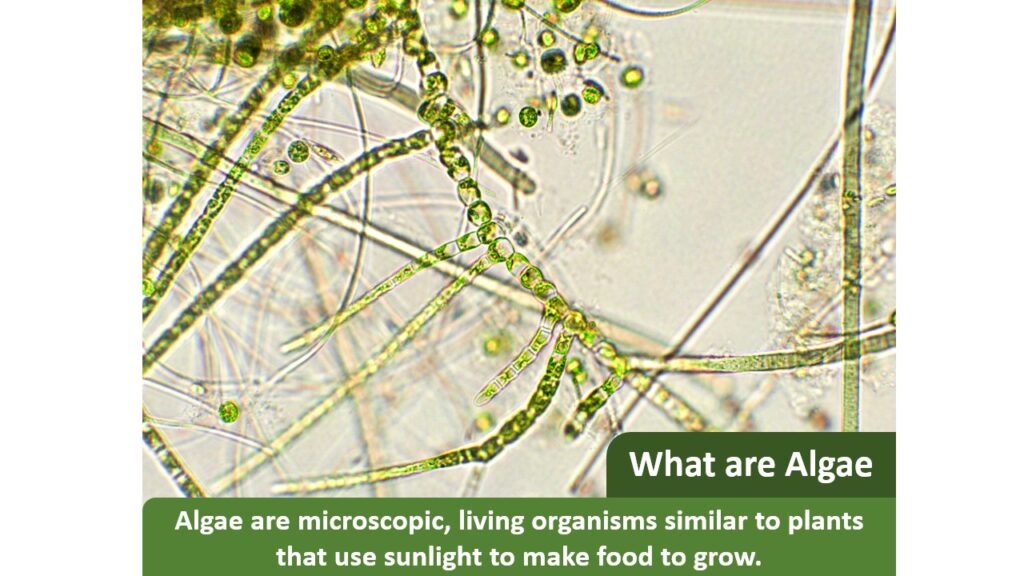
Is the Algae in My Water Tank Harmful or Toxic
Due to many recent developments, many can be concerned on whether or not the algae growing in their water tank is harmful, either to themselves, livestock, or their pets. According to the University of Kentucky College of Agriculture, there are more than 2000 algae species known and only around 80 species are known to be responsible for harmful toxins that can be dangerous to humans and animals.
Due to the growing conditions and nutrients required for significant algal growth that can result in toxin production, the odds of this happening in a water tank are fairly unlikely. A water storage tank, most often, holds pure freshwater, near pure water, or mildly dirty rainwater. The amount of nutrients and sunlight available inside a storage tank are often too low to cause what is known as a harmful algal bloom.
The takeaway: while we would not recommend drinking water from a water tank growing algae, it is unlikely to be a toxin-producing alga that could cause harm. A water storage tank growing algae should be treated before being used for consumption.
How To Know Whether Algae Will Grow or Not
How do you know if algae will grow inside a water tank? The answer: if sunlight can reach the water. Where does algae come from? The answer: algal reproductive spores or cells are widespread, found in the atmosphere, and likely already in the water. Even if filtered and treated water is used, if the water is left open or somehow exposed to the air, all that becomes needed for algae growth to begin is sunlight as algal spores are likely present.
To test how much sunlight is reaching the inside of a fully enclosed poly water tank, on a sunny day, open the lid just enough to look into the tank. If the sidewall of the tank appears illuminated rather than dark with the tank color, then sunlight is passing through the side and will reach any stored water and meaning algal growth should be expected.
In this Poly Tanks Series post, we will review the 10 most common ways to prevent or reduce algae in a water storage tank.
10 Ways to Eliminate or Reduce Growth of Algae in a Water Storage Tank
Reducing algal growth in your water tank focuses primarily on restricting the amount of sunlight that reaches the tank interior and therefore, the valuable water stored inside. Without sunlight, algae will be unable to photosynthesize and grow. Heat can also play a role in how quickly algae grow as they grow better in warmer climates and warmer water versus cooler temperatures. In addition to limiting sunlight, specific chemicals or equipment can be added to inhibit the algal life cycle and altogether prevent reproductive blooms.
When trying to maintain fresh water within a dedicated storage tank, there are ten (10) preventative measures that can be used to effectively eliminate or reduce the growth of algae. Some methods can completely prevent algal growth on their own, while others may only reduce algae and may work best when paired with additional methods.
1. Use a Tank Dark in Color
Use a Tank Dark in Color – The color and related transparency of the water tank plays a large role in algal growth based on the amount of sunlight the color lets through. The best colors for restricting sunlight transmission and reducing algae are tanks in black, dark green, light green and beige colors. Due to the added color, dark water tanks are considered opaque and more effective in blocking sunlight. Natural white plastic water tanks are the least effective option for outdoor water applications in terms of reducing or preventing algae as white water tanks are considered translucent and readily allow sunlight to pass through.
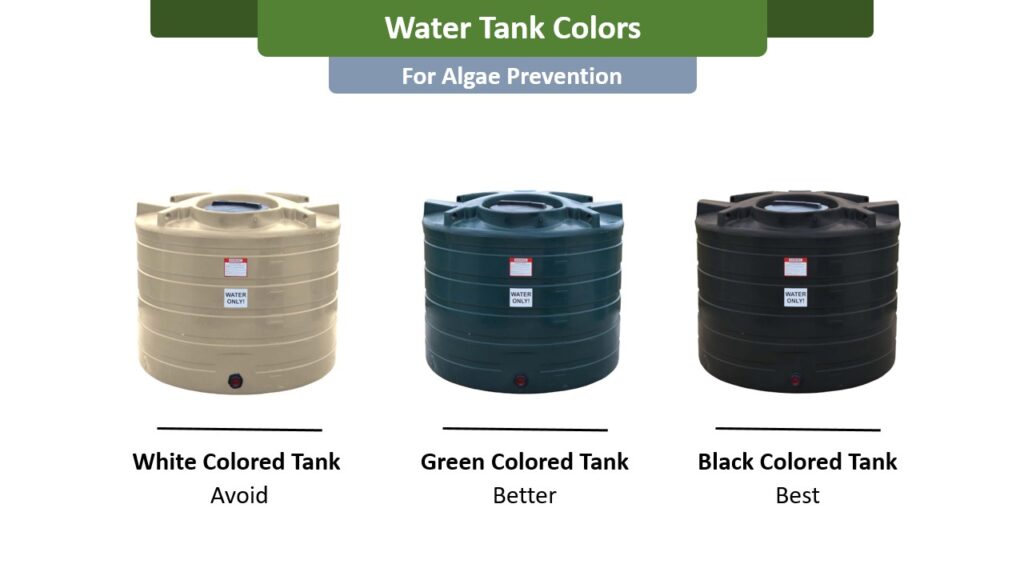
White color poly tanks make great water storage tanks but are best when installed and used indoors.
2. Internal Tank Liner
Internal Tank Liner – Some modern water tanks come with an additional internal tank liner installed. These liners, sometimes mentioned as sun block technology, are designed and added solely to eliminate sunlight transmission and will significantly reduce, if not entirely eliminate algae growth while not affecting water quality.
3. Pick a Good Tank Location
Pick a Good Tank Location – The location of a water tank location is important for limiting the amount of sunlight and warmth the tank receives. The best place for a long term, above ground water tank is in the shade provided by vegetation, a building, or by a designated structure. For people living in the northern hemisphere, placing a water tank on the north side of a building can be effective in keeping it in the shade most, if not all, the time.
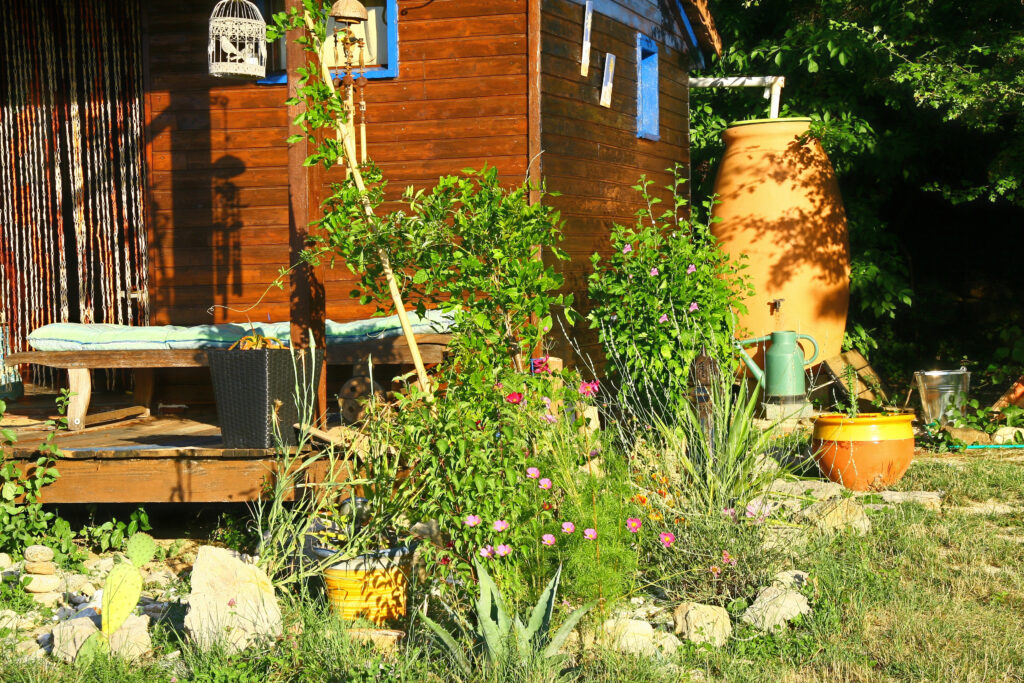
4. Use Water Treatment
Use Water Treatment – There are four water treatment methods that can be used to clean the stored water and reduce the occurrence of algae:
- Add bleach: To disinfect and remove algae, use bleach with a sodium hypochlorite strength around 7% and add 35mL (about 1.2 ounces) for every 100 gallons of stored water. This fix will only be temporary and will need repeating about once a week or so depending on the rate of algal growth.
- The amount of bleach to add will depend on the solution’s strength; that is, the concentration of sodium hypochlorite. Bottles of store-bought bleach will display the sodium hypochlorite strength on the active ingredient portion of the label. The stronger the sodium hypochlorite concentration, the less bleach will be needed.
- Note, the bleach volume recommended here is based on purifying the water while keeping it safe for human consumption. For livestock water troughs, the recommendation is to add 1.3 to 2 ounces (about 40-60mL) for every 100 gallons.
- For shock treatment and cleaning of a water tank, the recommendation is to use around 2 cups (16oz or 473mL) of 7% concentrated bleach for every 100 gallons; this level of water treatment is not meant for drinking.
- Add copper sulfate: To remove algae, add 1/8 teaspoon of copper sulfate to every 100 gallons of water. This recommendation is for general water storage and drinking water applications. Copper sulfate, sometimes listed as copper (II) sulfate, copper sulfate pentahydrate, bluestone or blue vitriol, is a known effective algaecide. Similar to bleach, copper sulfate treatment will be a temporary solution to algal growth and repeat treatment will likely be necessary.
- Additional considerations are recommended when using copper sulfate in aquaculture applications such as fish farming, aquaponics, or hydroponics to prevent harm to other living organisms. More or less copper sulfate may be necessary depending on the pH (alkalinity / acidity) of the water.
- Add zinc sulfate: Zinc sulfate is a potential alternative algaecide. However, zinc sulfate may not be as effective as the other treatment options available. To remove algae, dilute 1 cup (8oz or 236mL) of zinc sulfate in 1 gallon warm water and use 1/2 cup (4oz or 118mL) of this mixture for every 100 gallons of water. The zinc sulfate solution can be stored and used for repeat treatments. The solution should be mixed before use to ensure any precipitate is dissolved.
- Install ultraviolet (UV) light: To disinfect and remove algae, have a UV light emission source installed within the tank structure. UV light will purify stored water of algae as well as other microscopic organisms that could prove hazardous to health and human consumption. Please note, this method involves electrical wiring and potential water exposure and should be performed safely and/or by a professional. Another option is to use a water pump and a UV light treatment system to purify the water before use or set up a plumbing system to recirculate water back to the tank for continuous UV treatment.
5. Paint the Tank
Paint the Tank – Painting a plastic water tank can increase its resistance to light transmission and is better suited for white or light colored tanks. This can be a process, however, of preparing the plastic to aid in the application of paint as plastics often are not readily paintable for long term adhesion. The process may involve washing, scrubbing or etching, then painting the tank with a polyethylene approved paint, which is often an acrylic or specialty type paint. A flexible paint is recommended to keep the paint from chipping and account for the expanding and contracting experienced by plastic tanks as they heat and cool.
6. Build or Add a Tank Cover
Build or Add a Tank Cover – Water tanks can be covered or fully encased with a structure that can either provide shade or fully eliminate sun exposure to the tank.
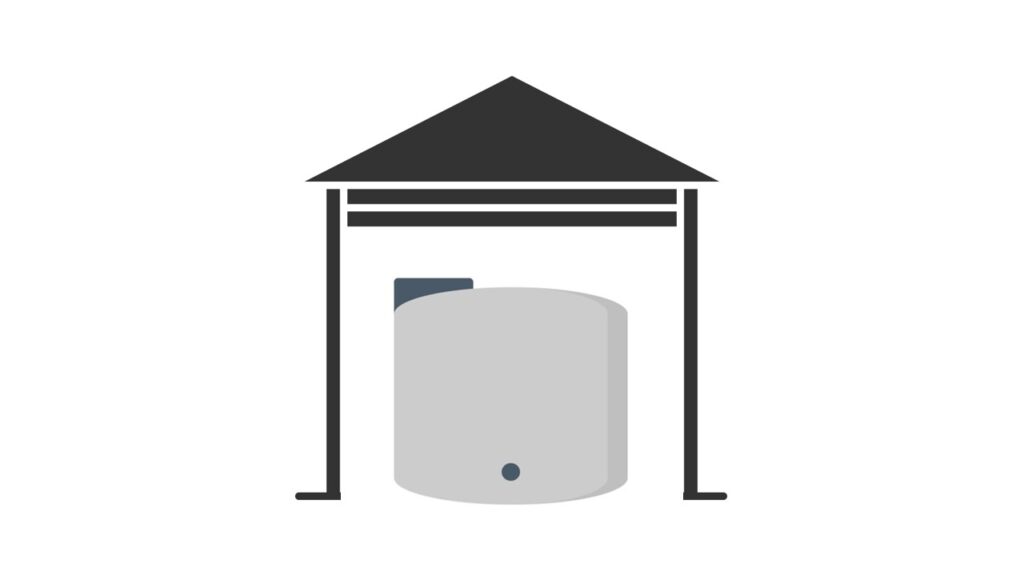
The structure can be made from any suitable building material such as wood, brick, concrete, sheet metal, etc. Example structures could include a simple roof overhang similar to a porch, a pavilion built for or around the tank, or a closed box with a door for accessing the water tank on the inside.
7. Grow Vegetation Around the Tank
Grow Vegetation Around the Tank – A different option and green thumb alternative: allow shrubs, small trees, vines, creepers or similar vegetation types to grow around or over the water tank in a maintained, well-cultivated fashion that will provide natural shade for the storage tank.
8. Tank Construction Type
Tank Construction Type – Certain types of water tanks will provide less algae growth. Polyethylene plastic tanks that have been built using rotational mold manufacturing techniques are seamless with smoother interior walls that can discourage surface algae growth. Metal water tanks completely block sunlight by design and should not experience any algal growth.

9. Change Tank Openings and Keep Openings Closed
Change Tank Openings and Keep Openings Closed – Reduce the amount of sunlight that passes through any tank openings or vents by changing them to styles better designed to keep light out. Some storage tank vents are made in such a way that allows light into the tank. These can be switched to bulkhead style fittings with opaque PVC pipe vents that double as an overflow if necessary or can simply be plugged if not needed. Openings such as lids on outdoor water tanks should only be opened when needed and kept closed at all other times to limit sunlight. For water tanks without a lid, consider installing a lid or placing something over the tank to keep the opening closed.
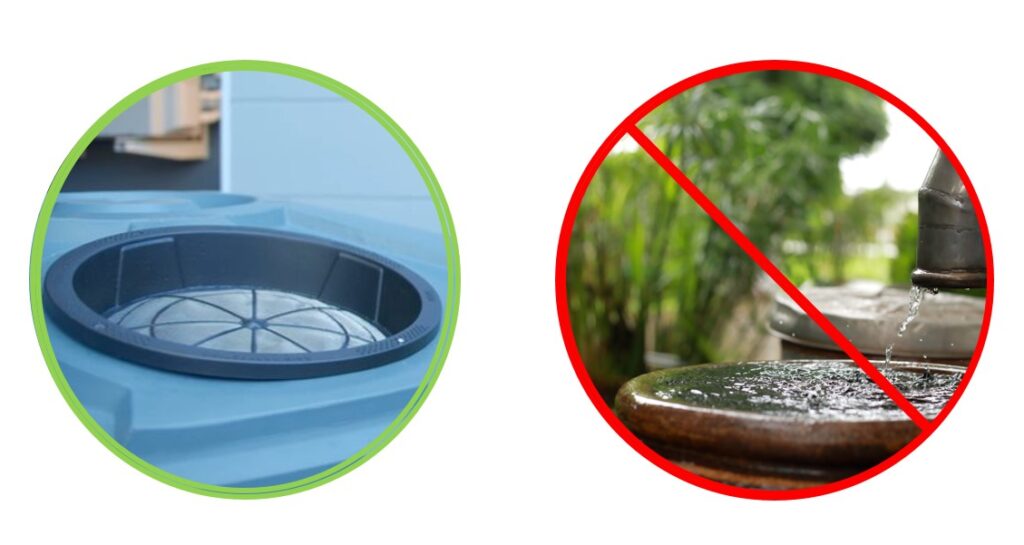
10. Underground Storage
Underground Storage – One of the best ways to fully eliminate algae growth in a storage tank is to install an underground water tank. Although underground water tank installation requires extra work, complying with any local regulations, a pump, and more plumbing, underground installation provides several exclusive benefits that result in consistent water quality.
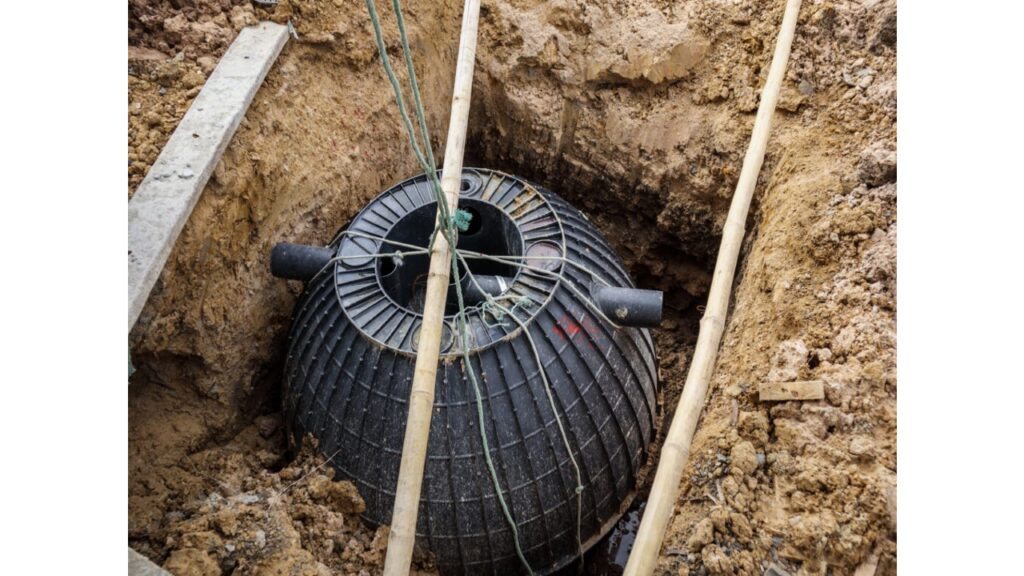
Benefits of an underground water tank include: zero sun exposure, stable water temperatures, zero pest intrusion, and freeze protection.
Takeaway | Reducing Algae in a Water Tank
Do algae regularly grow in your water tank, ruining your supply? Want to decrease the amount of tank maintenance and cleaning that is the result of algae? By employing one, or several, of the methods discussed in this Poly Tanks Series post, the amount of sunlight that reaches inside your water tank can be limited, and a water tank that is completely protected against sunlight can be a completely algae-free water source. In addition to limiting sunlight, treating the water tank with a chemical such as bleach or installing an ultraviolet light treatment system can also be entirely effective in reducing or eliminating algae in a water tank.
The best algae-free water tank will be dark in color, closed and kept closed, installed in the shade or underground, and may use a method of water treatment. If these measures are used and done properly, the result should be an algae-free water tank and supply.
If looking for a water tank that is resistant to algae growth and is rotationally mold manufactured in sunlight-blocking colors, we offer them here. We also suggest Snyder water tanks and Enduraplas water tanks as a top recommendation for light-blocking water tanks built with superior engineering by USA leading manufacturers. If you have any further questions, want to comment on our post, or need assistance with your individual water storage solution, reach out to our professional support experts today.